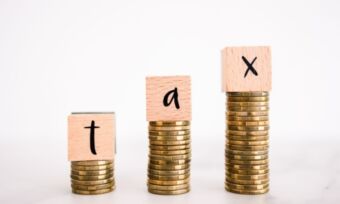How to work out if you're being paid correctly
A 5-step payslip health check.

A 5-step payslip health check.
Key points:
- In Australia, employers are legally required to prove their employees with a payslip.
- The Fair Work Ombudsman has a pay calculator to help you work out if you are being paid correctly.
- If you believe you are not being paid correctly, there are various ways to seek help.
A growing number of working Australians are missing out on their rightful payments. This is known as ‘wage theft’. The Fair Work Ombudsman answered 330,000 enquiries relating to wage theft and has recovered $509 million in unpaid wages and entitlements in the 2023-2024 financial year – a record sum for a record number of employees. In recent times, the Australian government has responded to wage theft with legislation – as of January 2025, intentional underpayment of wages is a criminal offence. This may have you questioning if your employer has paid you fairly, and if that’s the case, there are ways to check if your pay is correct.
Should I get a payslip and how often?
In Australia, it’s a legal requirement for employers to provide a payslip to each of their employees. Additionally, the Fair Work Ombudsman states that payslips should be given to you within one working day from the day you are paid, even if you are on leave. Your payslips can be either digital or physical but the information on both should be the same.
If you’re concerned about not receiving a payslip or getting delayed payslips, make sure to first query this with your employer. If the payslip is not forthcoming you can contact the Ombudsman or your union for support.
What should be on my payslip?
The main things that should be on your payslip include:
- your name
- your employer’s name
- your employer’s Australian Business Number (ABN)
- the dates of the pay period
- the date of payment
- your gross and net pay
- if you’re paid hourly, your ordinary hourly pay rate, number of hours worked at that rate and the total dollar amount of pay at that rate
- any loadings (including casual loading), allowances, bonuses, penalty rates, incentive-based payments or other paid entitlements
- the pay rate that applied on the last day of employment
- any deductions from your pay, including the amount and details of each deduction, as well as the details of the fund or account the deduction was paid into
- superannuation contributions paid for your benefit, including the amount made during the pay period or the amount that needs to be made and the details of the super fund the contributions were made to or will be made to.
What does a payslip look like?
The Fair Work Ombudsman provides a payslip template, which it suggests employers can use to create pay slips for their employees and employees can compare against their own payslip.
Where can I find out how much I should be paid?
How do you know if you’re actually on the right pay rate? A great place to start could be to check your base pay rate, allowances and penalty rates – including rates for overtime hours. The Ombudsman’s pay calculator can help you with this.
Your rate of pay should be no less than what is stated in your industry award, or your workplace Enterprise Agreement. Employees have the right to be paid the correct rate for all time worked, even for training, trial shifts or team meetings.
What if my payslip is wrong?
It’s against the law for employers to give you false or misleading payslips. In fact, an employer could be taken to court for wage theft and face a hefty fine, with possible imprisonment for individuals if found guilty.
Before it gets anywhere near that stage, it could be worth speaking or writing to your employer, requesting your full employment records. That way, you can check its records of payment against your own, and find any discrepancies. If they refuse, make sure you contact your union or the Ombudsman for advice. If the employer needs to pay back unpaid wages, they have to do so as soon as possible, as either part of a normal pay cycle or a special payment.
Joining your relevant industry’s union or association might also be helpful when trying to seek fair pay and resolve workplace issues. Their purpose is to provide industrial support and legal advice to their members.
Don’t forget about your super – check your payslip and your super account
1. Check the super stated on your payslip. Check your payslip to make sure your correct superannuation entitlements are being paid. You are entitled to be paid the 11.5% super guarantee on top of your gross income, which employers must pay at least quarterly, if you are:
- over 18 years old; or
- under 18 years old and working over 30 hours per week.
The super guarantee percentage will rise by 0.5% every financial year until it reaches 12%. Before 1 July 2022, employers did not have to pay super guarantee for workers earning less than $450 a month, but now they have to pay this amount regardless of the worker’s earnings.
2. Check your super account. Keep in mind that even if your payslip is showing that super is being paid by your employer, that doesn’t necessarily mean the correct amount of money is being transferred into your super account. The ATO recommends employees log in to your MyGov account to access super records to check individual deposits. The majority of employers also don’t always pay your super at the same time as your regular pay. Your superannuation has to be paid at least four times a year.
Employees can also check their statements issued by their super fund. Most funds allow members to access their accounts online, or send paper statements. You can also usually call your fund and ask it to send a statement to you.
The ATO warns there are harsh penalties for employers who do not pay staff their correct super entitlements or offer a choice of super fund. If your employer fails to pay you the super guarantee at the correct amount and into the correct super fund, they may have to pay the ATO a super guarantee charge.
Where can I get help if my employer is not paying me correctly?
There are many ways to seek help if you believe you’re not receiving your rightful payments from your employer. Some contacts you can seek include:
- Fair Work Ombudsman: 13 13 94
- Australian Taxation Office: 13 28 61
- Legal Aid in your state, or a workplace lawyer
- Your Union: 1300 486 466
 Online rollover
Online rollover
 Online application
Online application
 Online rollover
Online rollover
 Online application
Online application
 Online rollover
Online rollover
 Online application
Online application
 Online rollover
Online rollover
 Online application
Online application
 Online rollover
Online rollover
 Online application
Online application
Canstar may earn a fee for referrals from its website tables and from Promotion or Sponsorship of certain products. Fees payable by product providers for referrals and Sponsorship or Promotion may vary between providers, website position, and revenue model. Sponsorship or Promotion fees may be higher than referral fees.
On our ratings results, comparison tables and some other advertising, we may provide links to third party websites. The primary purpose of these links is to help consumers continue their journey from the ‘research phase’ to the ‘purchasing’ phase. If customers purchase a product after clicking a certain link, Canstar may be paid a commission or fee by the referral partner. Where products are displayed in a comparison table, the display order is not influenced by commercial arrangements and the display sort order is disclosed at the top of the table.
Sponsored or Promoted products are clearly disclosed as such on the website page. They may appear in a number of areas of the website, such as in comparison tables, on hub pages, and in articles. The table position of the Sponsored or Promoted product does not indicate any ranking or rating by Canstar.
Sponsored or Promoted products table
- Sponsored or promoted products that are in a table separate to the comparison tables in this article are displayed from lowest to highest annual cost.
- Performance figures shown for Sponsored or Promoted products reflect net investment performance, i.e. net of investment tax, investment management fees and the applicable administration fees based on an account balance of $50,000. To learn more about performance information, click here.
- Please note that all information about performance returns is historical. Past performance should not be relied upon as an indicator of future performance; unit prices and the value of your investment may fall as well as rise.
Cover image source: Fizkes/Shutterstock.com
This article was reviewed by our Content Editor Alasdair Duncan before it was updated, as part of our fact-checking process.

- Should I get a payslip and how often?
- What should be on my payslip?
- What does a payslip look like?
- Where can I find out how much I should be paid?
- What if my payslip is wrong?
- Don’t forget about your super – check your payslip and your super account
- Where can I get help if my employer is not paying me correctly?
Try our Superannuation comparison tool to instantly compare Canstar expert rated options.






